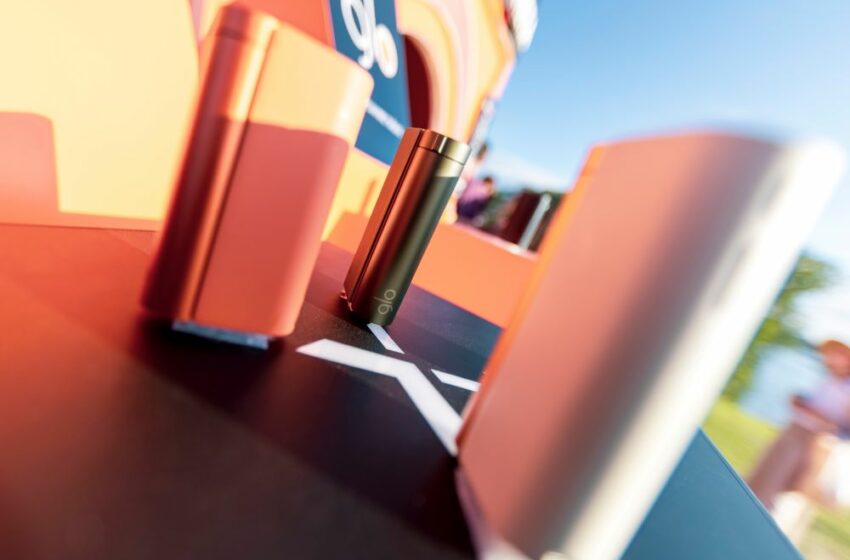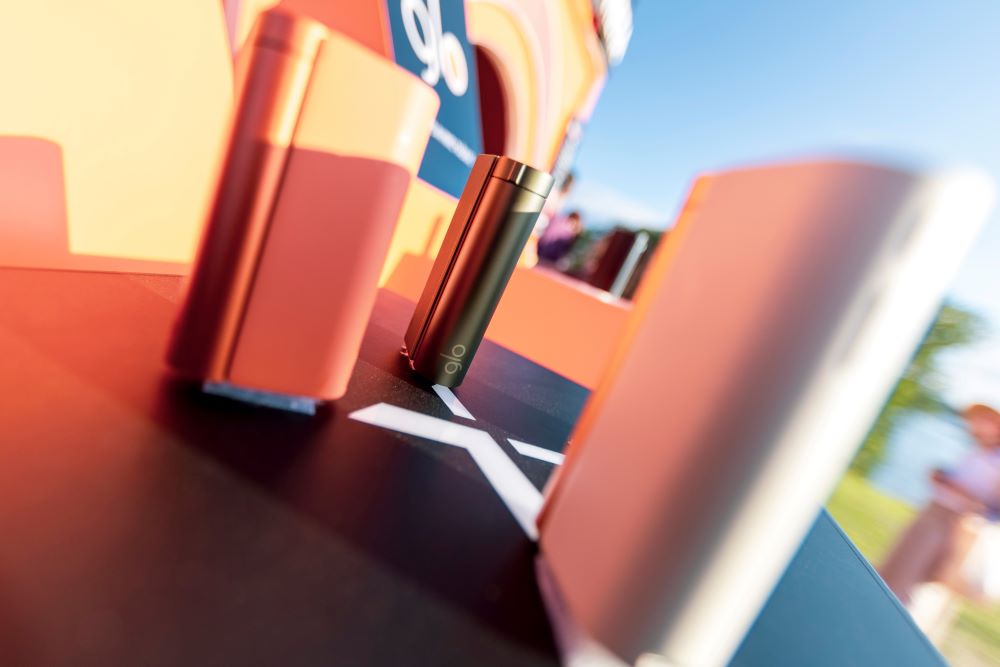Turning Up the Heat
- Also in TR Heat-Not-Burn Print Edition
- April 1, 2024
- 0
- 11 minutes read


Heated-tobacco products continue to gain momentum, although consumption patterns are shifting.
By Stefanie Rossel
Heated-tobacco products (HTPs) continue to make inroads worldwide. According to Euromonitor International, the market reached $35.2 billion in 2023, up from $31.5 billion in 2022. The company expects sales to grow to $40.6 billion in 2024. Expansion continues apace. At its 2023 Investor Day in September, Philip Morris International announced that it would launch its IQOS Iluma in four yet-to-be-named U.S. cities this year.
With almost 30 million adult smokers, the U.S. is believed to offer significant opportunities for HTPs. Euromonitor projects the U.S. consumables market to reach 15.3 billion sticks by 2027. In its September 2023 financial estimate, PMI said it was aiming to capture 10 percent, or 18 billion units, of the U.S. combustible cigarette market within five years after an IQOS Iluma launch.
“In value terms, HTP will be one of the fastest-growing legal RRP [reduced-risk product] categories,” says Shane MacGuill, Euromonitor’s head of nicotine and cannabis research. He bases his prediction on the experience of other markets where HTPs have been successful. “These are markets with a higher disposable income, a still relatively robust smoking population and strong affordability within the cigarette category, as IQOS is a premium product,” says MacGuill. “Manufacturers can communicate around tobacco and nicotine products, thus managing expectations around the HTP. Many of those factors apply in the U.S., but obviously in particular if PMI got modified-risk approval from the Food and Drug Administration; this would give them advantages for their messaging about IQOS.”
MacGuill also sees potential for HTPs in the U.S. cannabis space. “We do see heated cannabis consumables that effectively target the IQOS device just beginning to emerge, although this is still a tiny aspect of the cannabis landscape,” he says.
There is, however, a lack of consensus in the nicotine industry about the immediate future of HTPs in the U.S., according to MacGuill. “A major vape manufacturer we talked to said the HTP category would be almost nothing in the next five years because of regulatory issues, such as how long it will take to get premarket tobacco product application (PMTA) approval,” he says. “If you speak to peers of PMI, there are concerns that PMI could grow the category very significantly in the U.S., leaving no space in terms of revenue and recognition for everyone else.”

Waiting for FDA Approval
The upcoming launch will be PMI’s second attempt to establish IQOS in the U.S. In April 2019, the company assigned the exclusive commercialization rights of the brand to Altria, which then launched IQOS in Atlanta and Richmond with more than 100 dedicated salespeople. Heat sticks were sold in 500 stores. One-and-a-half years later, IQOS was available in Georgia, Virginia, North Carolina and South Carolina.
However, plans for further commercialization were interrupted when the International Trade Commission (ITC) upheld a claim by BAT that IQOS products infringed two of its patents. In September 2021, the ITC issued an order preventing Philip Morris and Altria from importing and selling the infringing products, IQOS models 2.4, 3 and 3 Duo and their respective heat sticks.
In July 2020, the U.S. Food and Drug Administration authorized PMI to make modified-risk claims for its IQOS model 2.4; in March 2022, it allowed modified-risk claims for the IQOS model 3. In October of that year, PMI agreed to pay Altria $2.7 billion to reclaim the U.S. commercialization rights for IQOS as of April 30, 2024.
The dispute with BAT was solved only in February 2024, when PMI and BAT reached a global settlement resolving all ongoing patent infringement litigation between the parties related to the companies’ HTP and vapor products. Besides dismissing all pending patent infringement cases, the nonmonetary settlement also prevents future claims against current products.
While the agreement includes a provision to request the lifting of the IQOS sales and import ban, PMI’s focus for the launch of IQOS in the U.S. will remain on its Iluma model, for which it submitted PMTAs and modified-risk tobacco product applications to the FDA in October 2023.
However, PMI has scaled back its original launch plans in the meantime: At the 2024 CAGNY Consumer Conference in February, the company revealed that only one city test was planned in the second quarter of 2024, with a larger scale introduction postponed to the second half of 2025 or later. The decision can be explained with the FDA’s slow reviewing process. Product authorization is the prerequisite for major geographic expansion and an increase in commercial investment, but the FDA is struggling with a substantial backlog in product reviews (see “System Overload,” Tobacco Reporter, March 2023). According to Tobacco Insider, it could take 18 months to 24 months for IQOS Iluma, which comes with a fundamentally different heating system than its predecessors and contains numerous technological improvements, to get authorization. “Thereby, IQOS will have a meaningful presence in the USA (i.e., reaching to at least half of the U.S. smoker base) only in 2027 or later […],” the platform writes on its website.
Nonetheless, PMI will enjoy a significant head start over its competitors. According to MacGuill, it will be important for BAT to enter this category in the U.S. as soon as possible. Globally, PMI estimated the number of IQOS users at approximately 28.6 million at the end of 2023, up by 3.7 million versus December 2022. BAT thinks there are about 8.8 million users of its Glo HTP device worldwide.
Italy Catches Up
With an estimated market value of $11.13 billion in 2023, according to Euromonitor, Japan remains by far the leading market for HTPs. But the market appears to have plateaued; its value is expected to reach $11.23 billion in 2024. A similar trend can be detected in South Korea, where the market value of HTPs climbed from $2.19 billion in 2022 to $2.24 billion last year. For 2024, the market is anticipated to be worth $2.45 billion. According to Euromonitor, in 2022, South Korea ranked third behind Italy in the global HTP league. In 2024, it is expected to fall to fourth place, behind Germany. Russia, too, is a large HTP market, but data has become elusive since that country invaded Ukraine. The most recent figures, presented at last year’s InterTabac exhibition in Dortmund, valued Russia’s HTP market at $3.2 billion.
As Japan’s and South Korea’s HTP markets reach maturity, price competition is increasing, according to MacGuill. “Consumers are experimenting with other brands, trying other devices, while manufacturers are subsidizing devices,” he says. “It’s the natural circle of the mature market to have rapid growth and then a plateau. However, the trend for HTP markets in general is that growth is likely to return with triggers such as price. There is no ceiling.”
The dynamics in Italy are similar, according to MacGuill. Its HTP market value has grown from $4.07 billion in 2022 to an estimated $5.18 billion last year and is expected to reach $6.51 billion in 2024, boosted by an increasing offer of devices at lower price ranges that drive product adoption. As in Germany, where the retail value of HTPs has increased from $1.96 billion in 2022 to an estimated $2.47 billion in 2023 and is anticipated to reach $2.98 billion this year, MacGuill expects the Italian HTP market to continue to grow, albeit at a slower pace than in Japan when IQOS first hit the market 10 years ago. In Japan, HTPs benefited from higher consumer incomes and consumers’ general enthusiasm for new products, among other factors. “In the two European countries, we don’t have that combination in the same way,” says MacGuill. Italy, he says, was also increasing cigarette taxes at the time when HTPs were introduced.
Globally, the HTP category is characterized by geographical diversification and an intensification of use. “Frequency of consumption plays an important role,” says McGuill. “In most markets, daily users represent the biggest proportion of consumers. In Italy, 73 percent of cigarette consumers smoke daily whereas 67 percent use HTPs, which is close and experiences volume progression. When there is a lot of experimentation, such as use on a weekly basis, then this will have a magnifying effect on volumes.”
Most notably, geographical expansion is expected in Jordan, Lebanon, Egypt and Singapore. “The further down the average income table, the softer the potential for HTPs gets—also the further east you go,” says McGuill. “Here, technology development that gets the price down for HTPs is needed. In these regions of the world, affordability will be the main driver.”
Opening Up New Possibilities
Regarding regulation of HTPs, MacGuill expects an alignment with the cigarette category in many markets, particularly in terms of public consumption restrictions and excise tax. This, he says, will bring the price of heat sticks closer to that of cigarettes, dulling the incentive to switch.
Herbal consumables will be an interesting segment. “It allows manufacturers to avoid the excise and regulatory hurdles,” says MacGuill. “However, regulators will move much more quickly and follow through with regulation and action. And herbal sticks could become a victim of their own success as there’s only so much rooibos tea in the world. So the security of supply might become questionable in some markets.”
Herbal consumables democratize the category, according to MacGuill, because small manufacturers won’t have to compete with the established players for leaf tobacco. “We already see smaller brands in the space with apparent success,” he says. “The segment won’t go anywhere near a point where it’s as fragmented as the vape market, but it will be interesting to see whether the tobacco industry will push for some regulation because they want responsible players and not what we have seen in disposable vapes.”
For tobacco companies, herbal heat sticks may pave the way for products in other areas, such as cannabis. “For BAT, for instance, which owns cannabis supplier Organigram, the next logical step could be to sell heated cannabinoid or CBD products,” says MacGuill.
He is doubtful, however, that manufacturers would provide a combined nicotine-cannabis product. “From a regulatory perspective, manufacturers are quite keen to keep these two spaces apart,” he says.
New heating technologies for devices, MacGuill stresses, will be successful only if they offer consumers a benefit. “This could be a meaningful difference to user experience, enhanced efficacy of the product or increased harm reduction at the higher end of the market, or a technology that drives down price at the lower end,” he says.
The most pressing task for public health and manufacturers alike, he concludes, will be to make HTPs more accessible to consumers in low-income and middle-income countries. Home to the lion’s share of the world’s smokers, it is in these markets that lower risk nicotine products can make the greatest contribution to reducing the public health impacts of smoking.

